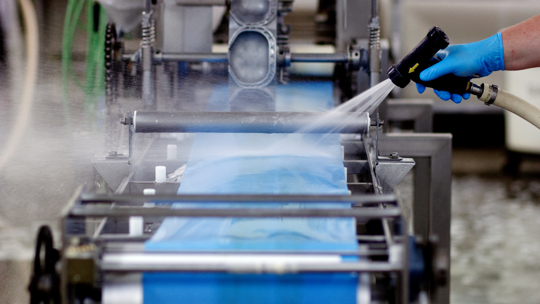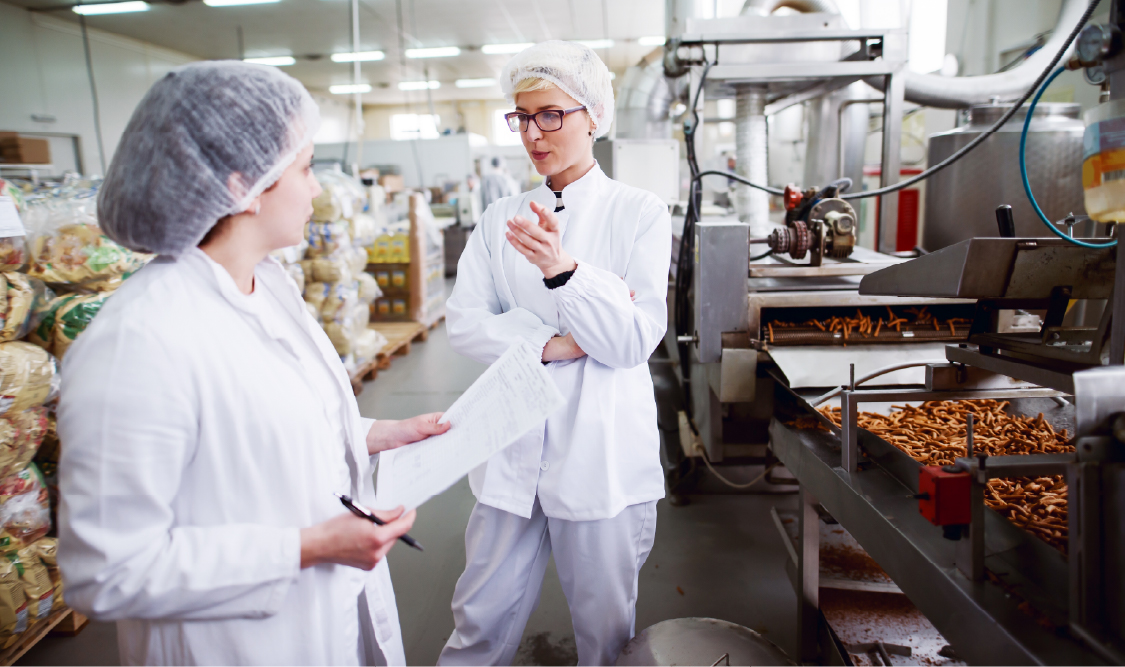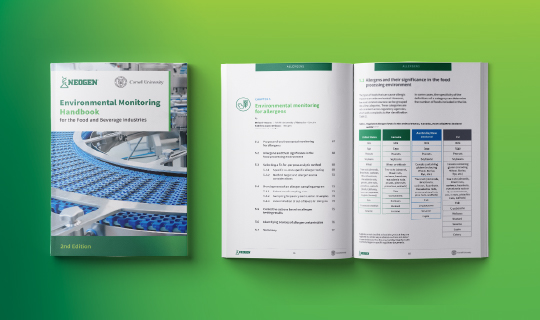Validating Non-Process & Pre-Requisite Controls with Environmental Sampling
11월 06, 2025

Food and beverage manufacturers are recognizing the growing importance of environmental sampling in manufacturing plants as a tool for validating non-process preventive controls (non-PPCs) and pre-requisite programs (PRPs). This expanded validation approach, which is in addition to the standard Process Preventive Controls (PPCs) and Critical Control Points (CCPs) required by the Food Safety Modernization Act (FSMA) and the Hazard Analysis and Critical Control Point (HACCP) system, provides scientific evidence through sampling to confirm that your food safety strategies effectively control and mitigate hazards.
Moreover, teams can verify that they perform non-PPC and PRP processes correctly through routine environmental monitoring.
In this article, you will explore how including a more formal and separate process for validating non-process preventive controls and pre-requisite programs can help strengthen your food safety system. For step-by- step guidance, examples, and planning tools, download the Neogen Environmental Monitoring Handbook for the Food and Beverage Industries (2nd Edition, 2025).
Why is Validation Important?

Food safety teams typically adopt a risk-based approach to identifying biological, chemical, and physical hazards through standard preventive control programs. Since these programs are vital to success, regulations mandate validation to ensure they are functioning as intended.
As the field of food safety continues to evolve, several globally recognized certification programs now require validation of non-process preventive controls and pre- requisite programs, acknowledging their importance in the overall success of the food safety system.
Neglecting to validate non-process preventive controls and prerequisite programs, or neglecting continuous monitoring and verification, can negatively impact the hygiene and safety of food production. Additionally, it can waste time and resources on avoidable corrective actions. Historical data shows that failures in implementing pre-requisite programs, such as inadequate sanitation, have frequently been implicated in food safety breaches. For instance, improper sanitation and sampling potentially contributed to a 2020 Listeria outbreak in a cheese production environment.
By validating non-process preventive controls and pre-requisite programs, your team can identify potential process issues, mitigate risks, and improve food safety outcomes. The validation process also helps your team demonstrate the effectiveness of your facility’s cleaning and sanitation, improve equipment design, and align your goals with evolving industry standards.
Explore Neogen’s Environmental Monitoring Handbook for a list of certification programs requiring validation of non-process preventive controls and pre-requisite programs.
Key Steps in Validation of Non-Preventive Process Control and Pre-Requisite Programs

A successful validation program begins with an experienced, cross-functional validation team that understands the importance of good communication and their role in meeting program goals. The support of upper management and plant production personnel is also important to the program’s success because it allows your new team to carry out the following validation steps freely:
Define Goals: The team begins by developing a comprehensive sampling plan that covers critical sites across various hygienic zones, including hard-to-reach areas. This plan includes both food contact and non-food contact surfaces, addressing the entire production environment. It must also align with routine verification and monitoring activities to maintain consistency across all phases of environmental testing. By including these critical sites, the team completes a full risk-based analysis of the environment. Additionally, the team makes sure that the sanitation standard operating procedures (SSOP) for cleaning and sanitation are clearly defined and validated for effectiveness. The team’s collaboration in validating these procedures is essential for maintaining effective hazard control.
Establish Methods: The team establishes methods for sample collection, measurement, and acceptance criteria to validate non-process preventive controls and pre-requisite programs. First, they define how samples will be collected and analyzed, with standard operating procedures in place for each step. Measurement methods must detect specific hazards or indicators, and you should base acceptance criteria on clear benchmarks or thresholds. When standards are not available, historical data or guidelines offered by the method manufacturer can be valuable resources for establishing criteria. Sampling frequency and timing are also important methods to establish. Your team should set criteria based on a risk-based approach, with higher-risk areas sampled more frequently. The team may also conduct observational sampling to assess cleaning, sanitation, and equipment procedures, with follow-up training to maintain consistency. The team can randomly rotate sampling sites to capture data from various factors, such as operational shifts and equipment reassembly. This approach can provide a robust validation study under typical and worst-case conditions.
Execute Validation Study: The team conducts a validation study to confirm that cleaning and sanitation processes are effective, that the equipment’s hygienic design reduces contamination risks, and that the overall food safety program functions as intended. The team also determines the frequency of validation runs, adjusting based on historical data, risk assessments, and operational changes. A well-documented validation study provides clear evidence of compliance, supporting audits, inspections, and ongoing training programs. This documentation should include the results of the validation study, the study’s design, acceptance criteria, and any changes made during the process. The documentation serves as an ongoing reference for training and maintaining food safety standards.
Each step of this validation process builds upon the others, creating a well-rounded and effective strategy for maintaining the highest food safety standards.
Achieving the Ultimate Outcome
Validation plays a key role in strengthening your food safety program and reducing risks by identifying potential process issues and allowing you to mitigate contamination risks before they escalate. By validating non-process preventive controls and pre-requisite programs, your team may reduce the need for corrective actions, improve operational efficiency, and make sure your production environment stays in line with evolving industry standards. When done well, it provides clear proof that your preventive controls are effective and ultimately helps to make your food safety system best-in-class.
For more in-depth guidance, including a list of certification programs which require validation of non-PPC or PRP, an example of a risk-based approach to test site selection, and a general workflow for validation of non-PPC and PRP, check out the Neogen Environmental Monitoring Handbook for the Food and Beverage Industries (2nd Edition, 2025).

범주: 식품 안전, 알레젠, 환경 모니터링, Veratox®